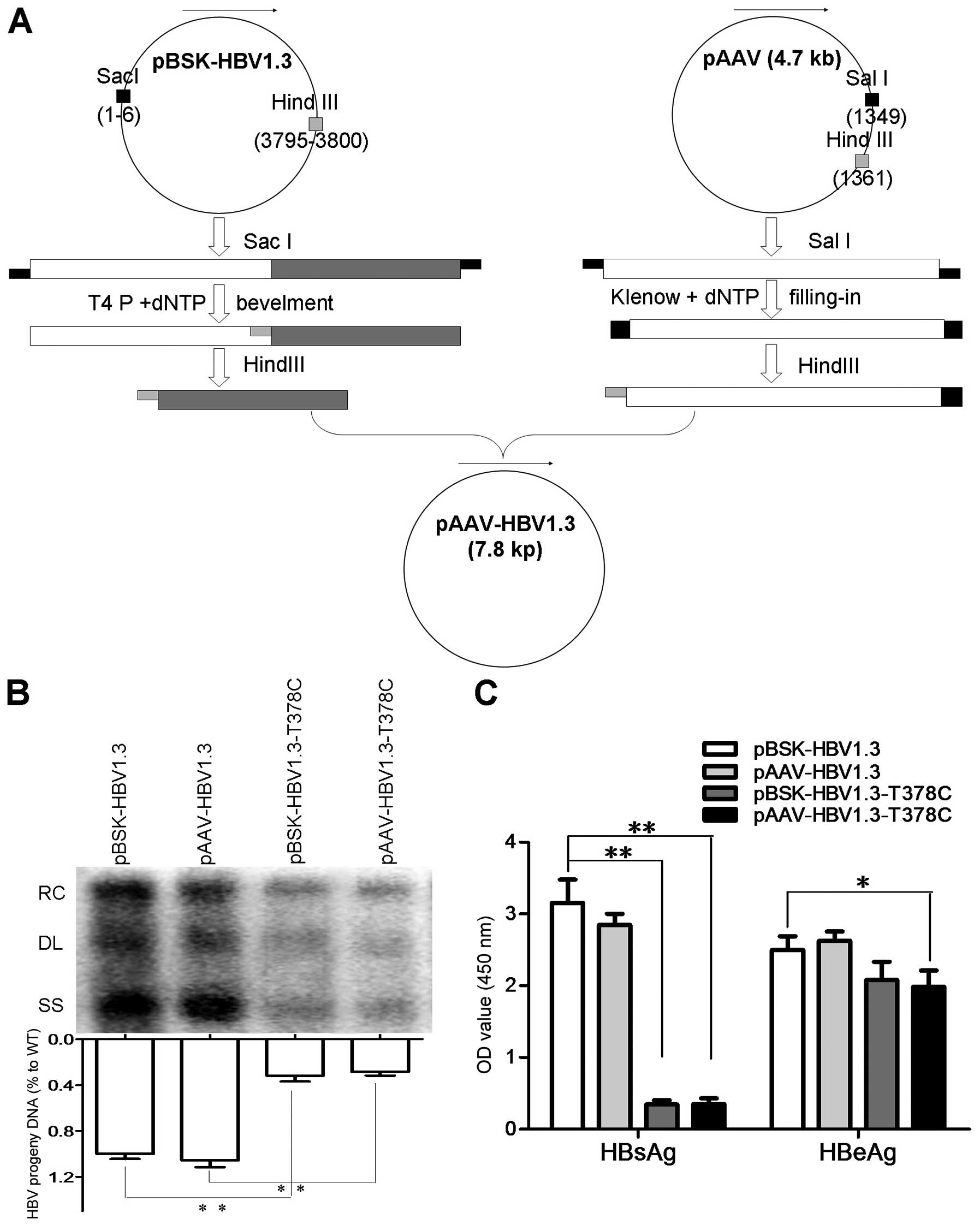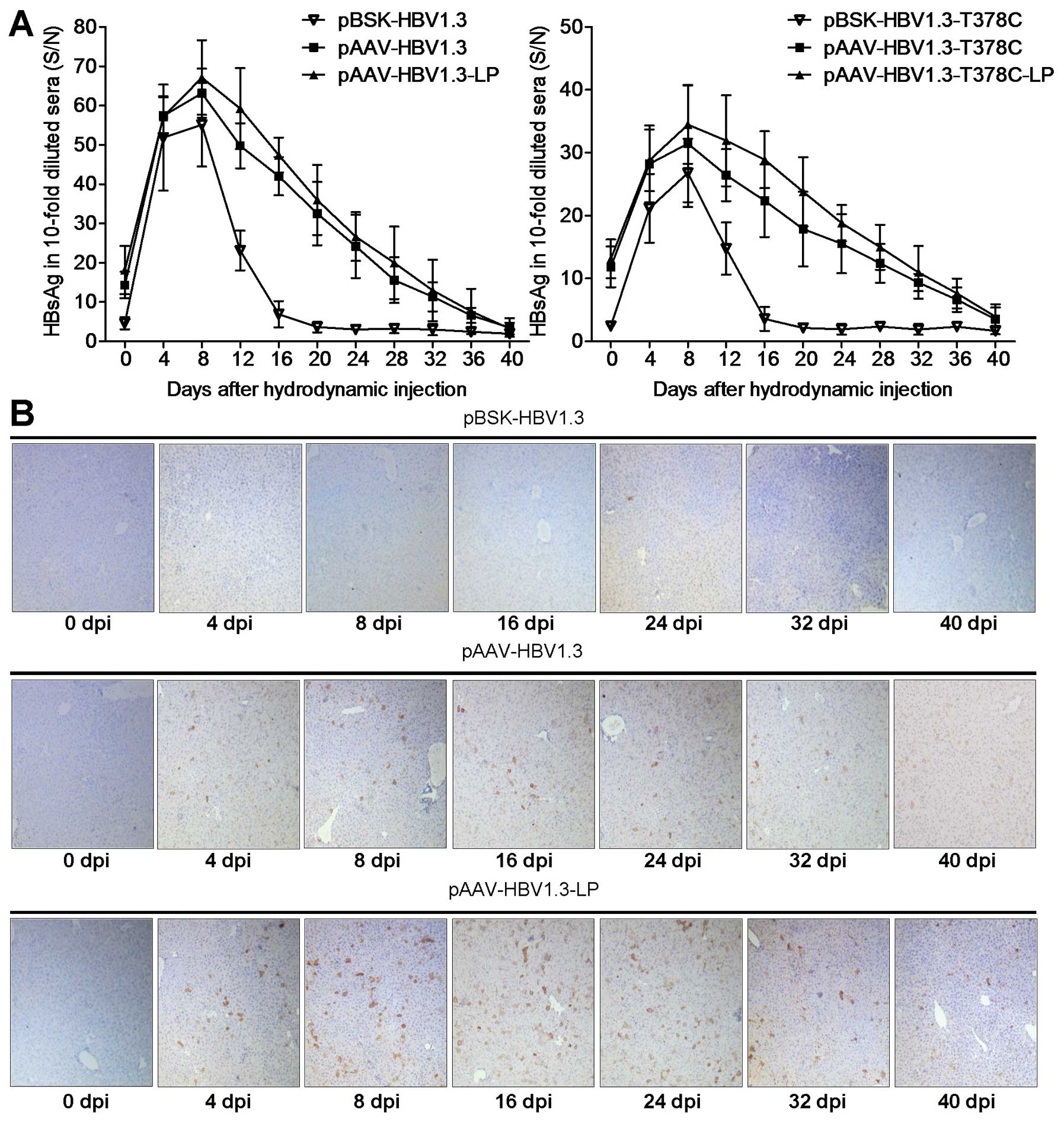|
1
|
Lavanchy D: Hepatitis B virus
epidemiology, disease burden, treatment, and current and emerging
prevention and control measures. J Viral Hepat. 11:97–107. 2004.
View Article : Google Scholar : PubMed/NCBI
|
|
2
|
Lee WM: Hepatitis B virus infection. N
Engl J Med. 337:1733–1745. 1997. View Article : Google Scholar : PubMed/NCBI
|
|
3
|
Yan H, Zhong G, Xu G, et al: Sodium
taurocholate cotransporting polypeptide is a functional receptor
for human hepatitis B and D virus. Elife. 1:e000492012.
|
|
4
|
Paganelli M, Dallmeier K, Nyabi O, et al:
Differentiated umbilical cord matrix stem cells as a new in vitro
model to study early events during hepatitis B infection.
Hepatology. 57:59–69. 2013. View Article : Google Scholar : PubMed/NCBI
|
|
5
|
Yan Z, Tan W, Dan Y, et al: Estrogen
receptor alpha gene polymorphisms and risk of HBV-related acute
liver failure in the Chinese population. BMC Med Genet. 13:492012.
View Article : Google Scholar : PubMed/NCBI
|
|
6
|
Zoulim F and Locarnini S: Hepatitis B
virus resistance to nucleos(t)ide analogues. Gastroenterology.
137:1593–1608. 2009. View Article : Google Scholar : PubMed/NCBI
|
|
7
|
Liu F, Chen L, Yu DM, et al: Evolutionary
patterns of hepatitis B virus quasispecies under different
selective pressures: correlation with antiviral efficacy. Gut.
60:1269–1277. 2011. View Article : Google Scholar : PubMed/NCBI
|
|
8
|
Takehara T, Suzuki T, Ohkawa K, et al:
Viral covalently closed circular DNA in a non-transgenic mouse
model for chronic hepatitis B virus replication. J Hepatol.
44:267–274. 2006. View Article : Google Scholar : PubMed/NCBI
|
|
9
|
Lim W, Kwon SH, Cho H, et al: HBx
targeting to mitochondria and ROS generation are necessary but
insufficient for HBV-induced cyclooxygenase-2 expression. J Mol Med
(Berl). 88:359–369. 2010. View Article : Google Scholar : PubMed/NCBI
|
|
10
|
Schinazi RF, Ilan E, Black PL, Yao X and
Dagan S: Cell-based and animal models for hepatitis B and C
viruses. Antivir Chem Chemother. 10:99–114. 1999. View Article : Google Scholar : PubMed/NCBI
|
|
11
|
Tang N, Huang AL, Zhang BQ, et al:
Construction of recombinant eukaryotic expression plasmid
containing 1.3-fold-overlength genome of HBV and its expression in
HepG2 cells. Zhonghua Gan Zang Bing Za Zhi. 11:464–466. 2003.(In
Chinese).
|
|
12
|
Huang LR, Wu HL, Chen PJ and Chen DS: An
immunocompetent mouse model for the tolerance of human chronic
hepatitis B virus infection. Proc Natl Acad Sci USA.
103:17862–17867. 2006. View Article : Google Scholar : PubMed/NCBI
|
|
13
|
Yin Y, Wu C, Song J, et al: DNA
immunization with fusion of CTLA-4 to hepatitis B virus (HBV) core
protein enhanced Th2 type responses and cleared HBV with an
accelerated kinetic. PloS One. 6:e225242011. View Article : Google Scholar : PubMed/NCBI
|
|
14
|
Qin B, Budeus B, Cao L, et al: The amino
acid substitutions rtP177G and rtF249A in the reverse transcriptase
domain of hepatitis B virus polymerase reduce the susceptibility to
tenofovir. Antiviral Res. 97:93–100. 2013. View Article : Google Scholar : PubMed/NCBI
|
|
15
|
Mizokami M, Orito E, Ohba K, Ikeo K, Lau
JY and Gojobori T: Constrained evolution with respect to gene
overlap of hepatitis B virus. J Mol Evol. 44(Suppl 1): S83–S90.
1997. View Article : Google Scholar : PubMed/NCBI
|
|
16
|
Gao W and Hu J: Formation of hepatitis B
virus covalently closed circular DNA: removal of genome-linked
protein. J Virol. 81:6164–6174. 2007. View Article : Google Scholar : PubMed/NCBI
|
|
17
|
Miller RH, Kaneko S, Chung CT, Girones R
and Purcell RH: Compact organization of the hepatitis B virus
genome. Hepatology. 9:322–327. 1989. View Article : Google Scholar : PubMed/NCBI
|
|
18
|
Carman WF: The clinical significance of
surface antigen variants of hepatitis B virus. J Viral Hepat.
4(Suppl 1): 11–20. 1997. View Article : Google Scholar : PubMed/NCBI
|
|
19
|
Qiu J, Qin B, Rayner S, et al: Novel
evidence suggests Hepatitis B virus surface proteins participate in
regulation of HBV genome replication. Virol Sin. 26:131–138. 2011.
View Article : Google Scholar : PubMed/NCBI
|
|
20
|
Qin B, He T, Chen Z, Xu W, Pan G and Tu C:
A novel method for the analysis of drug-resistant phenotypes of
hepatitis B virus. Int J Mol Med. 31:975–981. 2013.PubMed/NCBI
|
|
21
|
Hu J and Boyer M: Hepatitis B virus
reverse transcriptase and epsilon RNA sequences required for
specific interaction in vitro. J Virol. 80:2141–2150. 2006.
View Article : Google Scholar : PubMed/NCBI
|
|
22
|
Hu J, Flores D, Toft D, Wang X and Nguyen
D: Requirement of heat shock protein 90 for human hepatitis B virus
reverse transcriptase function. J Virol. 78:13122–13131. 2004.
View Article : Google Scholar
|
|
23
|
Chua PK, Wang RY, Lin MH, Masuda T, Suk FM
and Shih C: Reduced secretion of virions and hepatitis B virus
(HBV) surface antigen of a naturally occurring HBV variant
correlates with the accumulation of the small S envelope protein in
the endoplasmic reticulum and Golgi apparatus. J Virol.
79:13483–13496. 2005. View Article : Google Scholar
|













